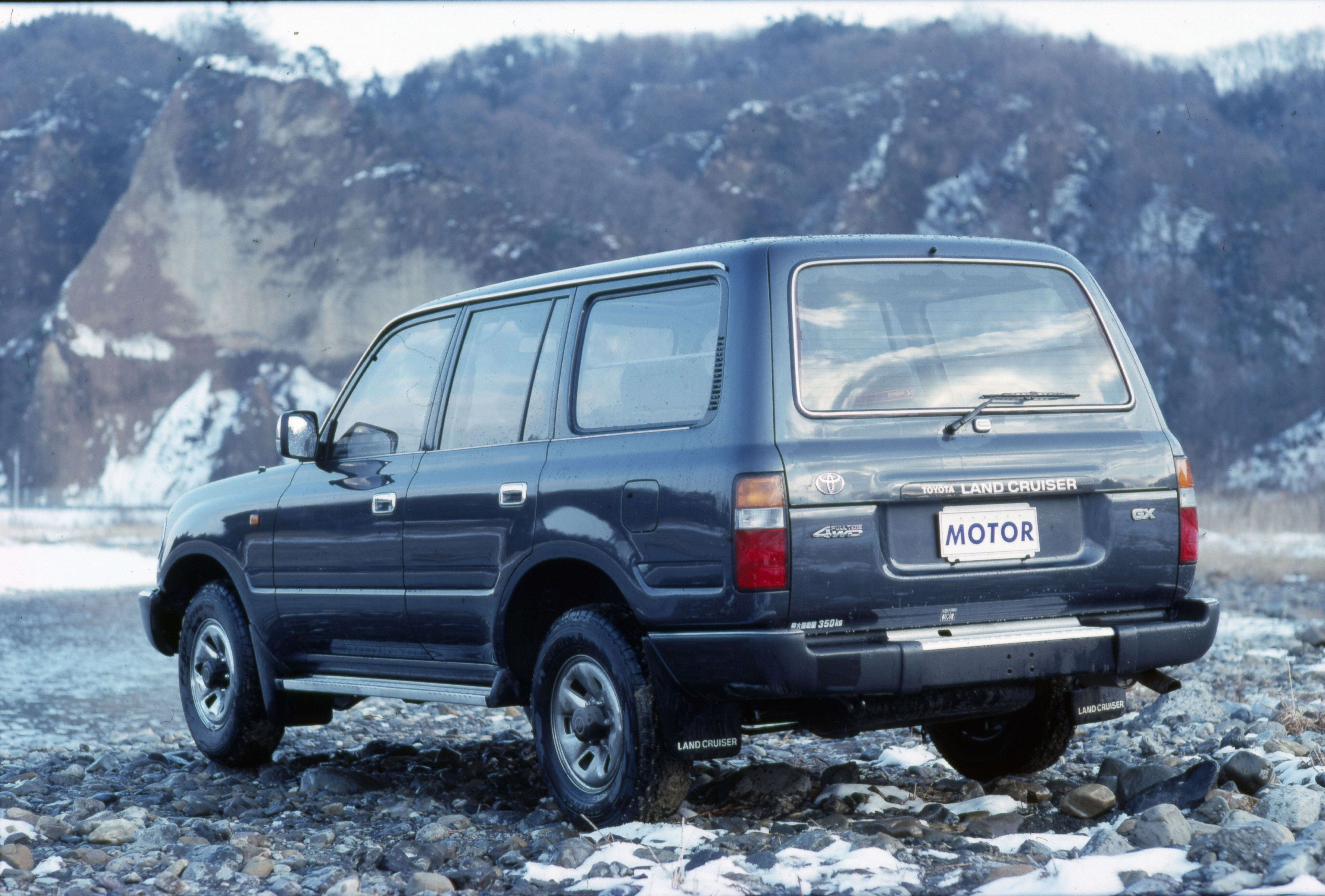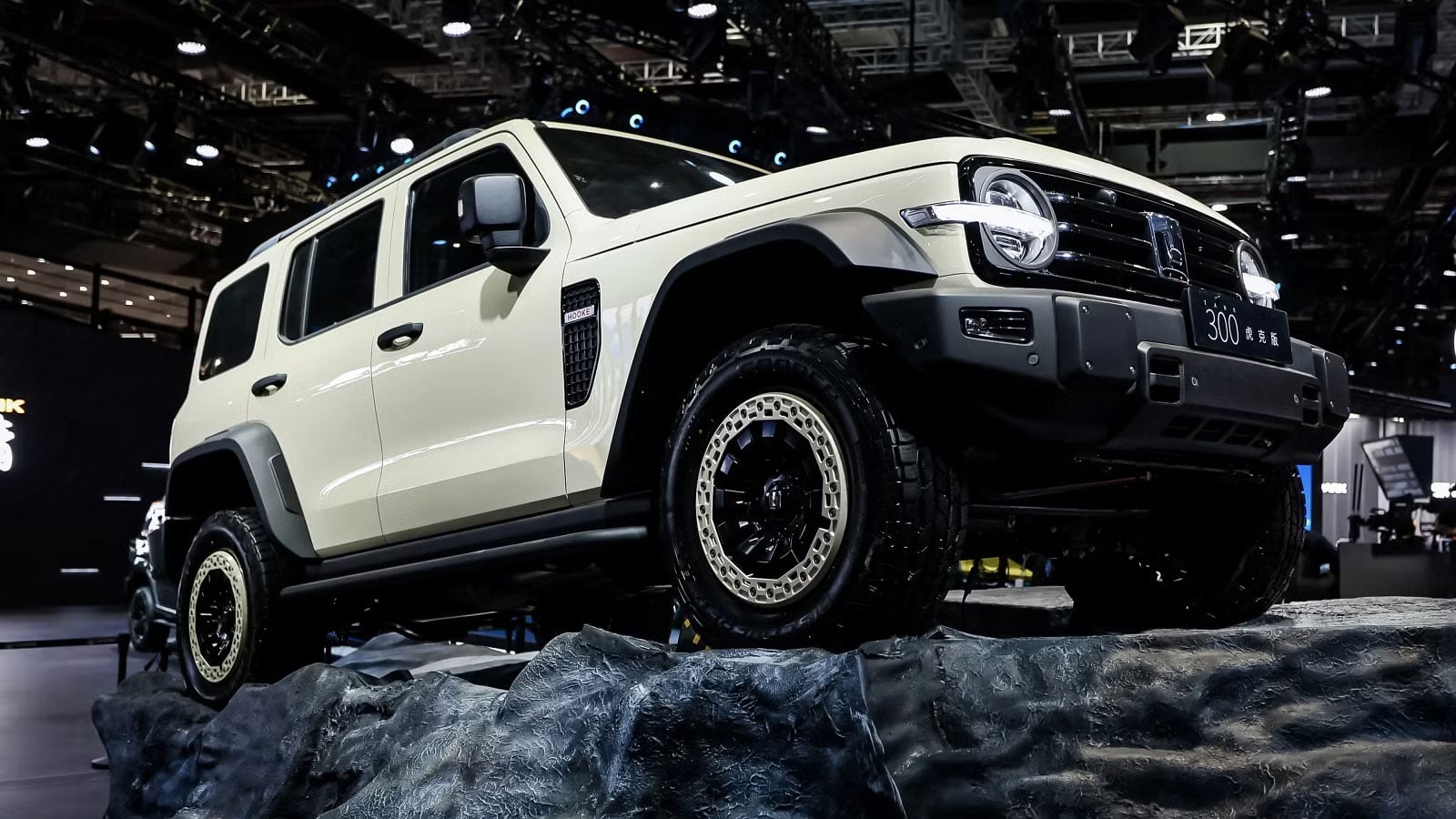If you have watched Toyota’s official global presentation of its upcoming 300 Series LandCruiser you would know that special praise was directed at the LandCruiser 80 Series and its honoured and unique place in LandCruiser history.Toyota 300 Series chief engineer Takami Yokoo said that in designing and developing the 300, the engineering team “used the 80 as a guidepost”. He went on to say “even 30 years after it first appeared, it has the best rough-road performance of any LandCruiser”.
By ‘rough-road’ performance you can read ‘off-road’ performance and given the 100, and more so the 200, bought significant advances in off-road performance enhancing chassis and powertrain electronics, that’s a big call.
These electronic driver’s aids have culminated in off-road specific electronic traction control complete with driver-selectable terrain-specific programs, and so-called ‘Crawl Control’ where all the driver has to do is steer and the vehicle ‘smarts’ do the rest, even in the most difficult and demanding off-road situations.

LIVE AXLE BONUS
THE 80 had nothing like this of course, so what made it so good off road?
Chief engineer Yokoo didn’t elaborate in the 300’s presentation but most obviously, the 80 had a live axle up front where the 100 adopted independent front suspension, a feature carried over to the 200. The only exception here was the 105, which was effectively the mechanicals of the 80 carried over as a 100 Series model.
Independent front suspension bought on-road civility to the 100 and 200, but at the expense of the generous and off-road enhancing wheel travel offered by the 80’s front live axle, or more specifically the 80’s coil-sprung front live axle.
Building on this, the 80 had driver-switchable front and rear differential locks. These were standard on VX Sahara and optional on the GXL at the Series launch in 1990, but eventually worked their way down to the entry-level RV model. Front and rear lockers (and driver lockable centre diff on full-time 4×4 models) combined with long-travel coil-sprung live axle suspension front and rear proved to be a formidable combination.
If the 80 offered some sort of benchmark for the future (chief engineer Yokoo made special mention that the 300 shared the 80’s “golden-ratio wheelbase”, it also marked a significant departure from its predecessor, the 60 Series, in what turned out to be a critical turning point in LandCruiser history.
Where the 60 rode on leaf springs front and back and had part-time 4×4, the 80 introduced coil springs and full-time 4×4, which set the pattern for the LandCruiser’s future. And while the 55 Series is generally accepted as the first LandCruiser to be pitched at the private leisure market (effectively as a 4×4 station wagon) rather than at commercial (construction, farming, forestry, mining, etc.) markets, the 80 was the first LandCruiser to finally cut all ties with its working-class and original military roots.

FULL-TIME 4X4
THE change to coil springs from the 60’s leaf springs allowed the use of spring rates some 25 to 40 per cent (model dependant) lighter than the 60, which was critical in producing family-car comfort, while the introduction of full-time 4×4 meant a more user-friendly 4×4 system, again enhancing its family appeal and practicality.But things weren’t all rosy from the start. The 80 arrived in 1990 feeling a bit not quite finished. As one harsh critic wrote, quoting Shakespeare’s Richard III, “… sent before my time. Into this breathing world, scarce half made up.”
At the time, there was speculation that Toyota was caught off guard by the arrival of Nissan’s groundbreaking GQ Patrol in 1987. With its all-coil suspension, the GQ made Toyota’s 60 Series feel very agricultural and buyers right around the world weren’t slow in catching on.
There was much evidence to suggest the 80 was rushed to market before all the finer details were sorted. On bumpy and winding roads the handling was that unsettled it led to the much-publicised term the ‘LandCruiser Lurch’, an unfortunate combination of excessive body roll and rear bump-steer.
The ‘specifically developed’ 265/75R15s Dunlop Grandtreks on GXL and VX Sahara models also proved very damage prone and even lost out in on-road steering and handling to the old-school tall and skinny (7.5R16s) Dunlop Road Grippers fitted to the base-spec models.

Things got worse with lower rear-suspension damper mounts breaking off the rear axle housing, even on road-test vehicles supplied to the media, surging and idling problems of the 1HD-T engine and the poor shift quality of the manual gearbox.
The petrol engine, a pushrod straight six from the 60 Series, was also underpowered and thirsty in both its fuel-injected (3F-E) and carburettor (3F) iterations.
To Toyota’s credit, these issues were addressed within two years when a revised model with a new, thoroughly modern and powerful 4.5-litre twin-cam straight-six petrol engine arrived along with a new manual gearbox, newly calibrated suspension and a revised wheel and tyre package. Although it was only when the 1HD-FT replaced the 1HD-T in 1995 in the 80 that the turbo-diesel issues were finally laid to rest.
But after that somewhat rocky start, which seems now a mere hiccup, the 80’s reputation as a tough, go-anywhere and refreshingly simple 4×4 has only grown.

THE BEST EVER
A few years back, 4×4 Australia asked all of its regular writers to name the most significant 4x4s of all time and it was no surprise that the 80 Series drew plenty of praise.
Ron Moon, the longest-serving editor of 4X4 Australia and regular contributor to this day, reckons “the 80 Series was the best LandCruiser wagon ever built – they’ve gone downhill from that pinnacle! Ooh, the latest might be smoother, faster and more refined, but they are far less a real 4×4!”
Bush icon John Rooth (aka Roothy) was on the same wavelength when he said, “all LandCruisers are good, but the 80 Series is the best of the lot. Get a good one and play in the dirt forever!”
Perhaps the last word should be left to someone who owns what’s been described as the “most photographed 80 Series on the planet”, 4×4 travel photojournalist Kev Smith who said of his 80, “with 520,000km on the clock the old girl is so simple to work on, and if you service them every 5-10,000km they will go forever. Now while it’s no power house the 80 series is super reliable …”

80 SERIES TIMELINE
1990 The 80 Series arrives in Australia mid-year with a ten-model-strong line-up that spans $33K to $78K. The two base-spec Standard Vans have vertically split rear doors and use the 75 Series powertrains, so part-time 4×4, manual-only but with the choice of straight-six 4.0-litre petrol or 4.2-litre diesel engines.
The mid-spec GXL and top-spec Sahara VX bring full-time 4×4 and expand on the powertrain choice with a turbo-diesel engine and automatic gearboxes for all three engine options. The two diesel engines, the naturally aspirated 1HZ and the turbocharged 1HD-T are family siblings and both brand-new.
The turbo claims 115kW and 357Nm while the atmo is good for 94kW and 271Nm. The 4.0-litre pushrod petrol engine is essentially carried over from the 60 but gains electronic fuel injection (as the 3F-E) when mated to the automatic gearbox, which bumps it to 112kW and 290Nm from the carburetted (3F – mated to the manual) version’s 110kW and 284Nm.

1992 Not before time the 3F and 3F-E engines are consigned to history as Toyota takes the wraps off its brand-new 4.5-litre straight-six petrol engine, the IFZ-FE. Complete with twin overhead cams and four valves per cylinder it makes a mighty 158kW and 373Nm and brings serious performance to the 80.
Toyota also introduces an RV spec 80 (only with the new petrol engine strangely) and drops the petrol Standard Van and the manual gearbox option from the Sahara VX. Across the range improvements include revised suspension (although with a lower rear ride height), a new manual gearbox, bigger brakes, and side-intrusion bars, while the Sahara VX gets anti-lock brakes and the option of a sat-nav system! Prices span from $40K to $87K.

1995 With the imminent introduction of Euro 1 emissions standards, Toyota drops the 1HD-T turbo diesel in favour of the 1HD-FT. The new turbo diesel’s headline act is the adoption of four valves per cylinder (the F in the engine code) but in reality, the 1HD-FT is a from-the-engine-block-up revision of the IHD-T. It claims 125kW and 380Nm.
The updates also run to new front-end styling, a new dash, and new wheels and tyres. Prices now run from $49K (RV petrol manual) to a heady $112K (Sahara VX TD automatic) over the nine-model line-up.

COLLECTOR’S ITEM?
The 80 Series sold in huge numbers over its eight-year life span in Australia, but finding one second-hand now isn’t easy. Perhaps if you own an 80, you just want to keep a hold of it, as there are still plenty on the road it seems.
At the time of writing, a quick check on Australia’s biggest used-car sales website revealed just 36 examples of the 80 Series for sale nation-wide. The least expensive was a 1995 GLX 4.5-litre petrol auto with 360,000km on the clock at a seemingly bargain basement $8500. At the other end of the price range was a very tidy looking 1997 GXL turbo-diesel manual that had racked up 370,000km and was asking for $51,500. Ouch!

SPECS: 1990 80 SERIES (GXL DIESEL MANUAL)
| ENGINE | Straight-six SOHC diesel |
| CAPACITY | 4.2-litre |
| COMPRESSION RATIO | 22.7:1 |
| MAX POWER | 94kW at 4000rpm |
| MAX TORQUE | 271Nm at 2000rpm |
| GEARBOX | Five-speed manual |
| 4X4 SYSTEM | Dual-range full-time |
| CRAWL RATIO | 46.2:1 |
| CONSTRUCTION | Separate chassis |
| FRONT SUSPENSION | Live axle; coil springs |
| REAR SUSPENSION | Live axle; coil springs |
| FRONT BRAKES | 286mm discs |
| REAR BRAKES | 312mm discs |
| WHEELS | 15-inch steel |
| TYRES | 265/75R15 |
| WHEELBASE | 2850mm |
| GROUND CLEARANCE | 235mm |
| APPROACH ANGLE | 37u2070 |
| DEPARTURE ANGLE | 25u2070 |
| KERB WEIGHT | 2070kg |
| GVM | 2960kg |
| PAYLOAD | 890kg |
| TOWING CAPACITY | 2500kg |
| FUEL TANK | 145L |
| ARCHIVAL FUEL USE | 14.8L/100km |





